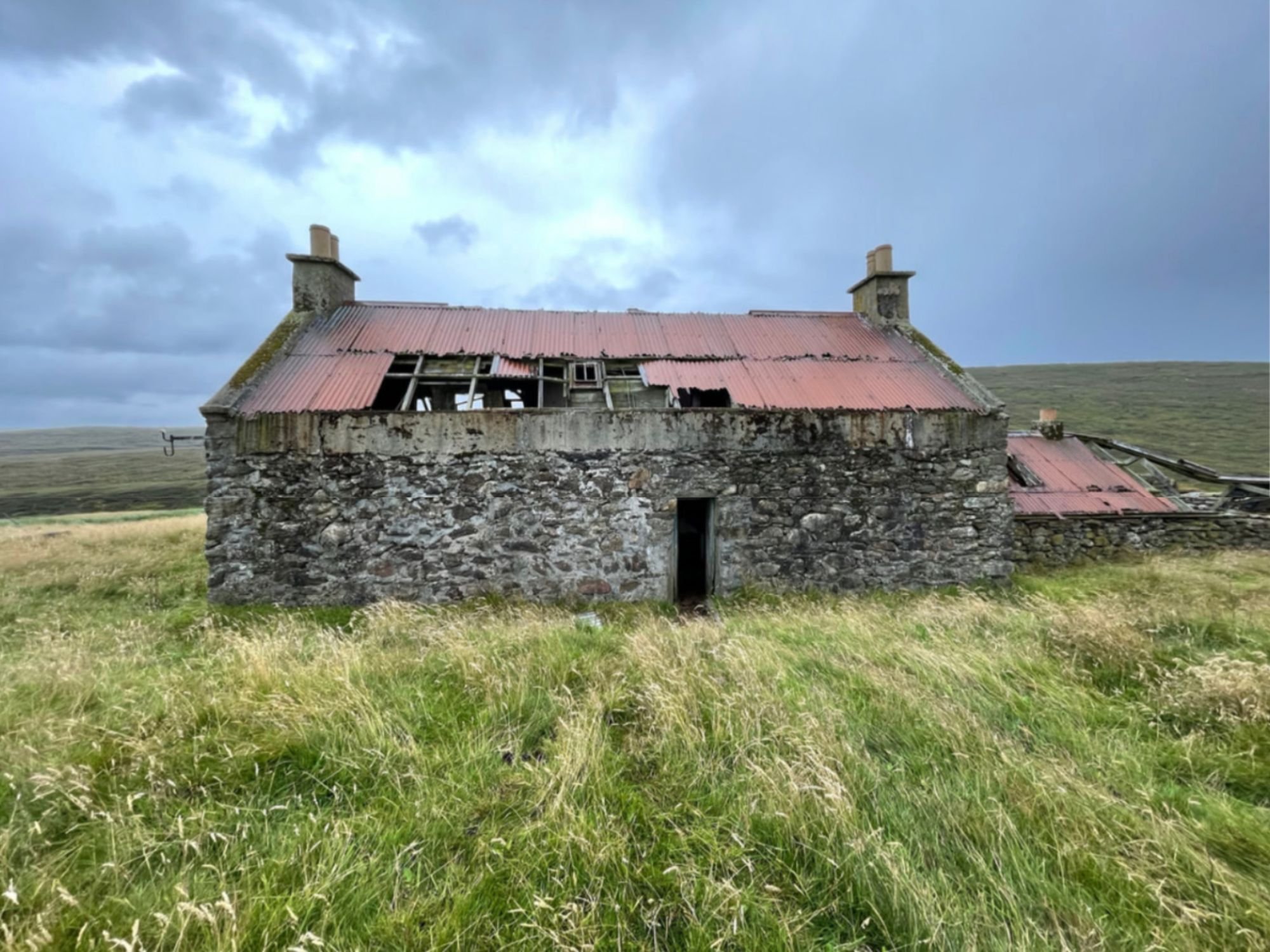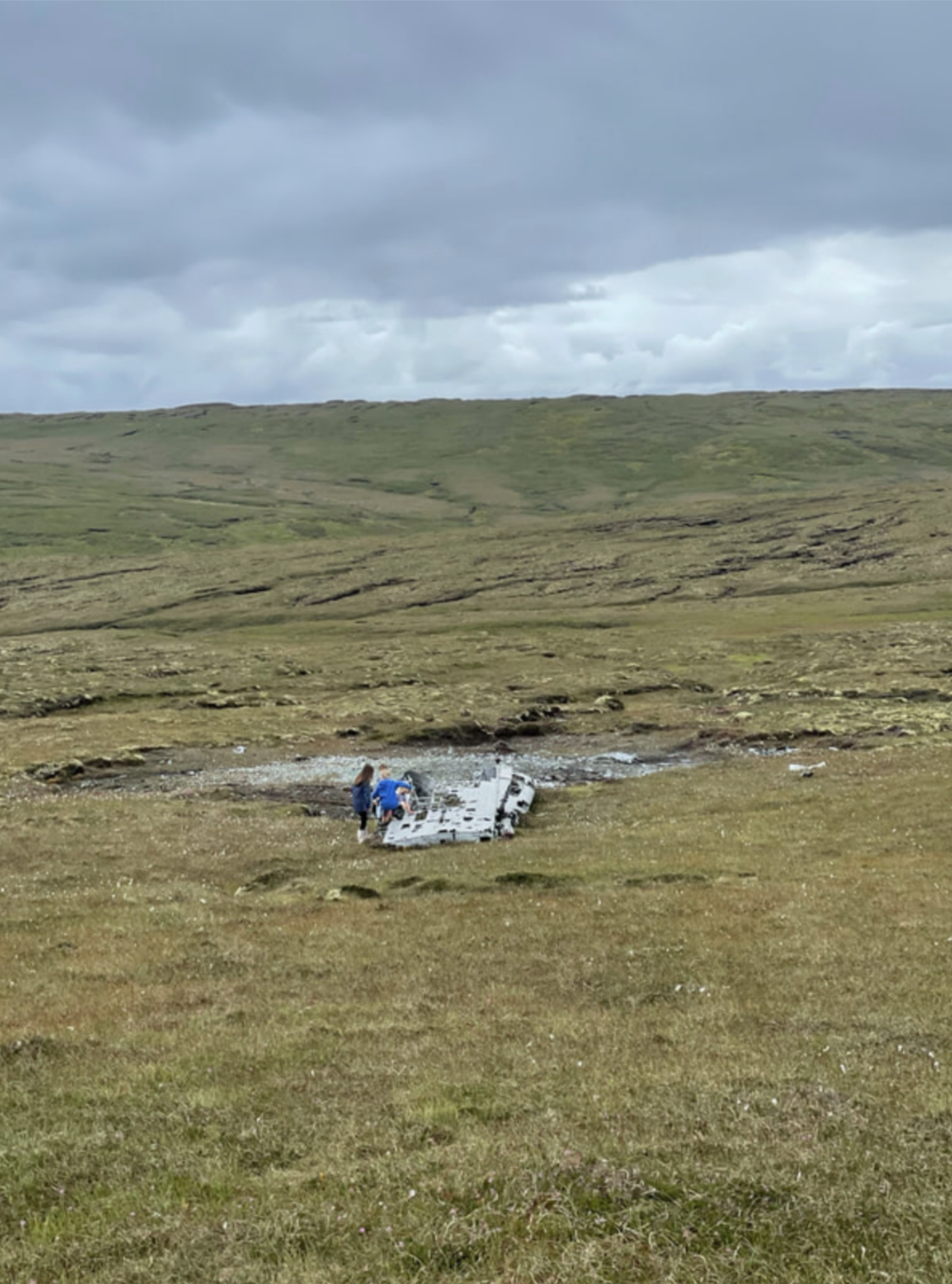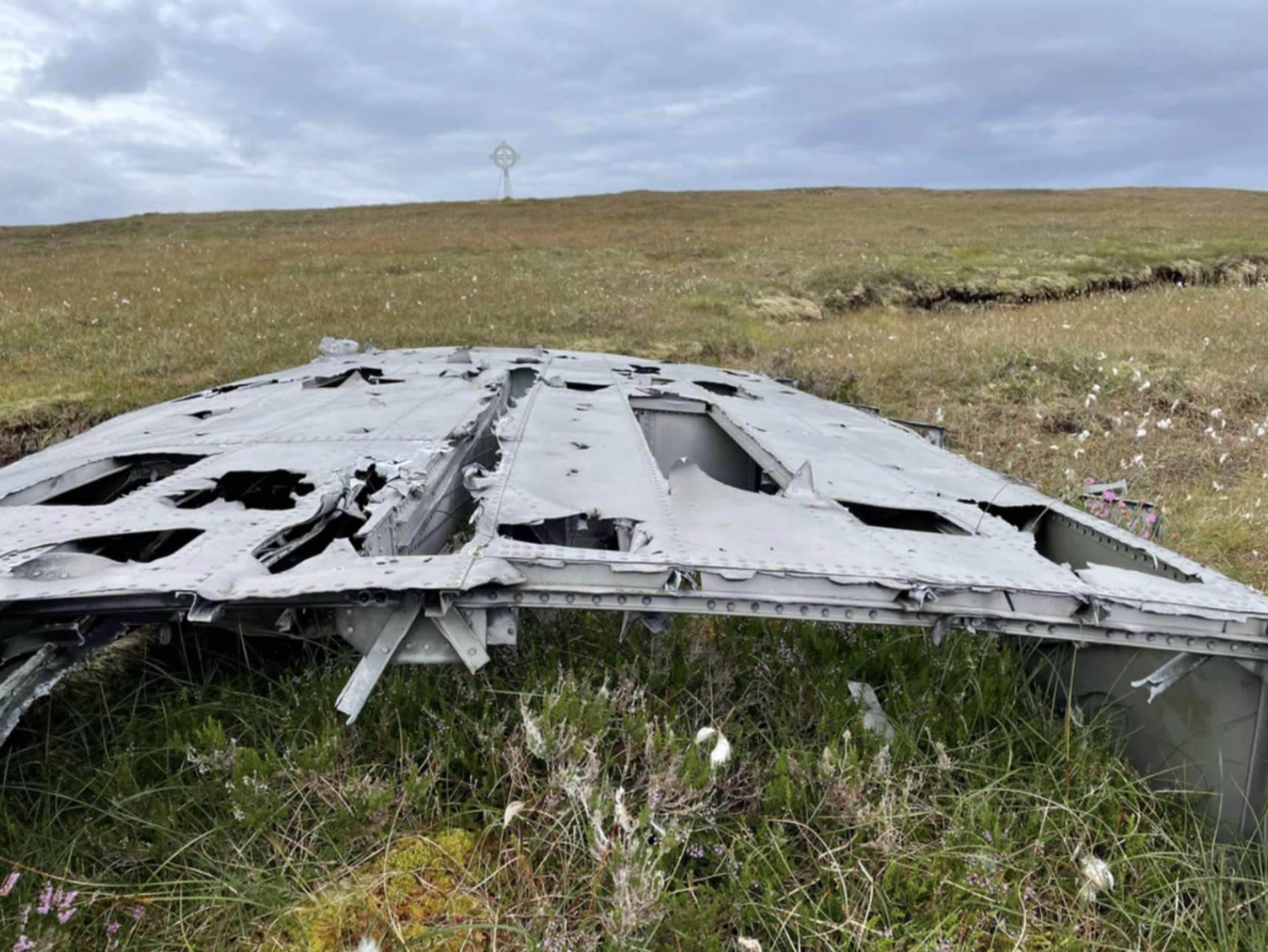A walk to the Catalina crash site, Arisdale, Yell
Start the walk at Arisdale croft, Yell.
You know that feeling, as the days start to change and the seasons begin to switch, it feels as though we’re falling into autumn at freefall speed. That’s when I anxiously try to squeeze in as much as possible, squeezing those last drops out of summer as if I were squeezing a lemon.
August is a month that makes me uneasy; it feels like the best of the summer has passed. The flowers are spent and shrivelled on their once-proud stems, the colours in the landscape begin to mute, and the sun that hung suspended in an eternal summer sky through June and July drifts lower in the sky as the day slowly gives way to night once more.
Yet, real poetry comes with August and an urgency to tick off all those things you wanted to do in summer. June and July are like a high-octane ride, but August forces us to slow down and we appreciate the little things in nature so much more, as we know they are drawing to a close for another year, to return again on the wind, in another season.
Still, my mind begins to wander into the months ahead, towards autumn and winter, and as I blow the dust from the candles that have been left unlit since spring, and fill the basket with fire kindling once more, I reflect on the summer’s adventures.
The following walk stopped me in my tracks as I considered the tragic loss of life that took place on a lonely and remote hillside in the heart of Yell, Shetland’s largest North Isle.
Burravoe, Yell.
It often surprises visitors to learn that Shetland played a pivotal role in the Second World War – in fact, the first bomb dropped on British soil landed in Shetland – and with military bases across the islands, including the strategically important RAF base at Sullom Voe, the islands were a busy hub of activity, with servicemen, boats and planes coming and going throughout the war years.
The following walk is to an aeroplane crash site on the island of Yell. Yell is just a short hop across Yell Sound on the modern inter-island ferry. The crossing takes about 15 minutes, and passengers can stand on the upper deck, enjoying panoramic views across the sound, past the uninhabited islands of Bigga and Samphrey. Yell itself is around 17 miles long and seven miles wide, boasting large expanses of uninterrupted moorland – explored on this walk – stunning beaches and breathtaking coastal walks.
West Sandwick Beach, Yell - one of many fantastic beaches to explore.
Walk description:
Distance: 5.15 miles (8.2 km)
Time: 2.5 hours
Rating: Moderate
For this walk, we parked the car up the rough farm track that leads to the derelict house at Arisdale (there’s a turning point about halfway up the road, but please be mindful not to block access). The walk is signposted “Catalina Memorial” and is roughly halfway along the B9081 between Ulsta and Burravoe.
The walk takes about two-and-a-half hours to complete and reaches inland beyond the sea into Yell’s heathery internal moorland. One of the most striking features of this walk is that there is no evidence – other than the grazing sheep – of people for almost the entire journey. There are no built structures (other than a stone-built sheep pen), houses, fences or roads in sight, and it feels wild, unspoilt and very remote. The remoteness of this area made the experience particularly poignant when considering the fate of the Catalina crew who were to crash here on a cold, dark January night during the Second World War.
A roadside sign marks the way.
From the farm track, waymarker signs mark the direction, leading beyond the derelict house of the one-time storyteller, Brucie Henderson (1891 - 1977) [You can hear one of Brucie’s recorded tales, here.] Brucie was a skilled storyteller who could make a story out of anything – as all the best storytellers can! The house he shared with his sister is now in ruin, a reminder of crofting times past in Shetland.
From the Arisdale croft, posts mark the route that roughly follows the valley of Arisdale where a fairly substantial stream – by Shetland’s standards – weaves its way along the valley floor before terminating into the sea.
The terrain is rough heather and relatively uneven in places – a good pair of sturdy walking boots are needed – and peat ‘hags’ [an overhang of peat] need to be navigated with care, bearing in mind that they may be hidden by overgrown heather.
The croft at Arisdale of one-time storyteller, Brucie Henderson.
The walk ascends gradually up the side of Arisdale to a height of about 60 metres, where the Catalina crash site is found. Arisdale is Yell’s highest hill, reaching a height of 210 metres.
There is little in terms of landmarks along the way, and the landscape is very much one of heather and moor. Despite this, it’s a fantastic walk, uninterrupted by anything more than sheep and the odd Shetland bumblebee, busily working among the heather.
So much of the narrative and focus on walking in Shetland concentrates on the drama of coastal walking, and we often forget that many of the inland expanses are worth exploring too!
Arisdale Catalina crash site, Yell.
Arriving at the crash site, I was surprised at how much of the wreckage remained visible on the hill. The silver wing of the once-proud Catalina seaplane stood out starkly like a cuckoo in a songbird’s nest against the moory hillside. In full late-summer flower, the heather plants sprung from the ground, weaving through the jagged remains of torn metal, reclaiming its metal mass back into the earth.
The remaining wreckage is marked by a large upright memorial in the form of a cross, bearing a simple plaque that reads:
Catalina memorial.
The plane had abandoned a mission to detect the German battleship Tirpitz thought to be in the North Sea area. The aircraft crashed whilst trying to land at RAF Sullom Voe due to engine trouble.
Of the 10 crew, seven were killed when the plane crashed into the hillside at Arisdale. Incredibly, three survived, and one man, Flight Sergeant Dan Lockyer, raised the alarm after pulling one of the crew to safety.
He bravely set out in the dark January night to find help. Unsure where he was, he followed the Burn of Arisdale that led him two miles down the valley to the home of Brucie and Kate Henderson, who raised the alarm and looked after him.
The people from South Yell recovered the two remaining casualties, and the victims were buried in the nearby Hamnavoe Church. The pilot’s widow, Mrs Mary Goolden, created a tapestry that hangs proudly in the church.
The memorial was unveiled in 1991, Mrs Goolden was in attendance, and Flight Sergeant Dan Lockyer laid a wreath in memory of his crewmates.
Catalina plane crash with memorial in the background, Arisdale, Yell.
This blog is in memory of the following crew who lost their lives on that January night:
… and in memory of the three men who survived the ordeal:
I enjoyed this walk, and it was bittersweet to reflect on the horrors of that night in such a beautiful summer setting as the birds sang and the heather flowered – a far cry from the bleak January night that these brave men endured.
Lest we forget.















